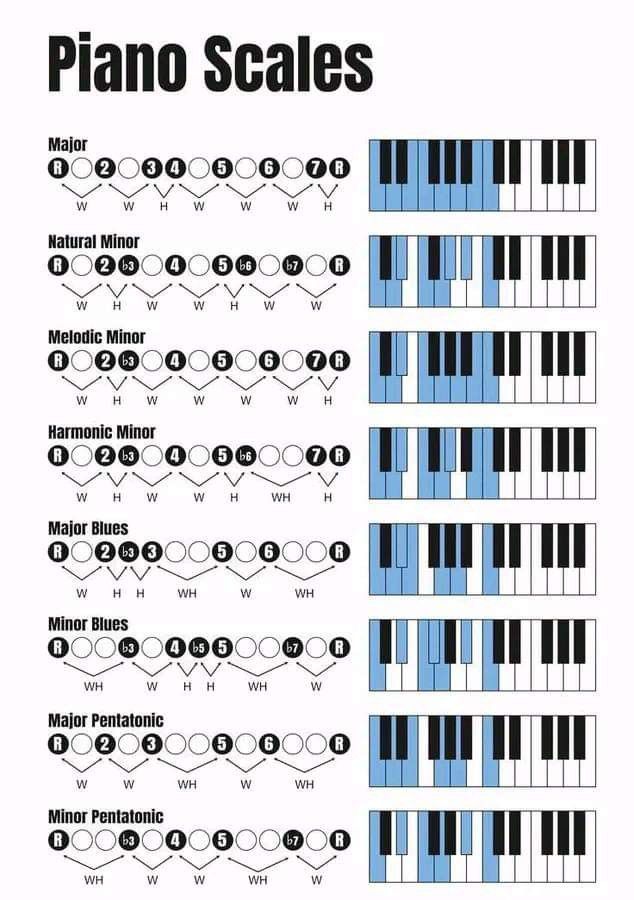Learning how to play the chromatic scale on the piano is an essential skill for any pianist. This scale uses every single key on the keyboard, including both white and black keys. Once you get the hang of it, you’ll notice how it helps in strengthening finger control, speed, and dexterity. In this post, I’ll guide you through the process and fingerings for both the left and right hands.

What is the Chromatic Scale?
The chromatic scale consists of 12 notes, each a half-step apart. That means you’ll be playing every note in succession, moving from key to key without skipping any, whether white or black.
For example, starting on C, you would play:
C, C#, D, D#, E, F, F#, G, G#, A, A#, B, C
Right-Hand Fingering
For your right hand, the fingering is quite simple once you get the hang of alternating fingers in a specific pattern.
- Start on C with your thumb (1).
- Use your index finger (2) on C#.
- Thumb (1) on D.
- Index finger (2) on D#.
- Continue this alternating thumb and index finger pattern, using your middle finger (3) when necessary (for example, F and B).
Here’s the detailed pattern:
- C (1) → C# (2) → D (1) → D# (2) → E (3) → F (1) → F# (2) → G (1) → G# (2) → A (3) → A# (2) → B (3) → C (1)
You’ll notice that your thumb (1) and index (2) do most of the work, while the middle finger (3) helps on notes like E and B.
Left-Hand Fingering
The left hand follows a similar alternating pattern but uses different fingers.
- Start on C with your pinky (5).
- Use your ring finger (4) on C#.
- Pinky (5) on D.
- Ring finger (4) on D#.
- Thumb (1) will be used on E.
Here’s the detailed pattern for the left hand:
- C (5) → C# (4) → D (5) → D# (4) → E (3) → F (2) → F# (1) → G (3) → G# (2) → A (1) → A# (3) → B (2) → C (1)
Your pinky and ring finger will handle most of the lower notes, while your thumb will step in for key transitions.
Practicing Tips
- Start Slow: Begin slowly and work your way up to playing faster. Focus on keeping a smooth and even tone.
- Use a Metronome: Practice with a metronome to develop consistent timing.
- Mirror Practice: When you play the chromatic scale hands separately, try to mirror the fingering patterns. It helps build muscle memory.
- Hands Together: Once you’ve mastered each hand, try playing both hands together. This will require coordination, so don’t rush it.
Benefits of Mastering the Chromatic Scale
- Improved Dexterity: Playing the chromatic scale forces you to practice all finger combinations, improving your control and accuracy.
- Better Understanding of Half Steps: You’ll gain a better sense of half-steps on the keyboard, which helps when learning other scales and pieces.
- Increased Speed: Regular practice of the chromatic scale helps in improving speed across all keys.
Conclusion
The chromatic scale is a valuable tool for any piano player, whether you’re a beginner or an advanced musician. By practicing the correct left and right hand fingerings, you’ll improve your technical ability, speed, and finger coordination.
Keep practicing, and soon you’ll be able to play the chromatic scale smoothly and confidently!
- 🎶 Flute Lesson for Beginners: Learn Your First Notes Easily
- Homesteading Knowledge: Back-to-Basics Skills for Self-Reliant Living
- 🎸 Dmaj7 Guitar Chord: A Smooth and Dreamy Sound for Your Songs
- July 5th in America: The Quiet Day After the Boom
- Who Is Vanessa Trump? Inside the Life of Donald Trump Jr.’s Former Wife